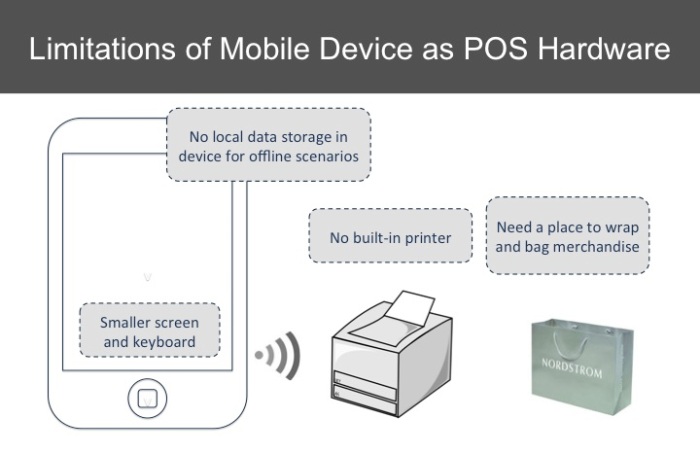Long lines are the ultimate enemy in retail. They provide extra time for customers to reconsider their potential purchases: “Do I really need this?”, “Am I spending too much money?”, “Do I want to wait in line for this?”. A customer standing in line can easily set aside a part of a purchase or walk away altogether. A mobile POS can decrease the wait times in the checkout line, and provide high-touch customer service in departments such as shoes and cosmetics where customers are usually seated when ready to make a purchase – why make them get up to pay?
My role in this project:
- Identify key business and customer scenarios affected by introduction of mobile POS
- Identify limitations and trade-offs of using mobile POS technology vs. legacy cash registers
- Develop strategy to roll-out mobile POS, phase out legacy cash registers, while maintaining parity in customer service
The customer wins are clear: shorter lines and not having to get up to checkout when in shoe or cosmetics department.
From a business operations perspective, the mobile devices put a heavy burden on the salesforce to maintain the same level of customer service. There were new challenges that needed to be addressed with the introduction of mobile POS devices:
- The mobile device needs to be charged and prevented from theft.
- The smaller screen and keyboard required UX changes and optimizations. For ex., how do we minimize typing on the small keyboard?
- The lack of a built-in printer meant salespeople had to carry a small wireless printer, which needed a carrying device, replacement paper, and needed to be charged.
- Without the cash wrap station salespeople had to find their nearest wrap station, or bring the supplies to the customer. We had to design a graceful human process and strategic store floor plan to address this.

